After the “No Quadrant? No Problem!” article went up, I got a bunch of requests for the rough castings.
My original patterns were pretty basic and after cranking out four sets of the quadrants for the Wadkin PK, I decided I should refine the pattern to help reduce the number of machine operations required to go from a rough casting to finished quadrant.
Here are some pictures of the original pattern (these are actually rough castings since the pattern is still at the foundry):
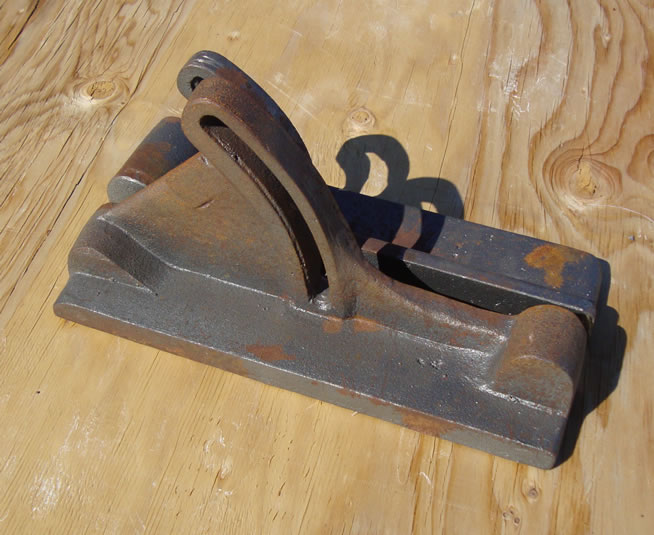
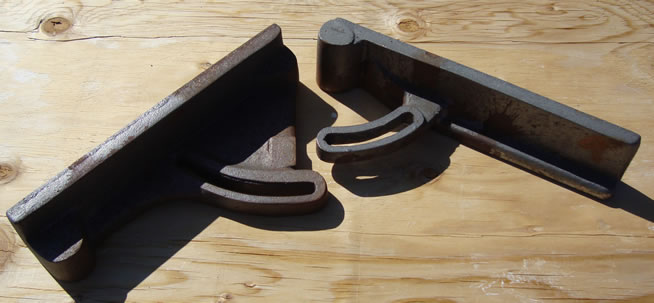
I purposely made these patterns heavy. I added material where I commonly see the quadrants broken. I also wanted to add a little more material to the machined surfaces so I had some wiggle room in the finishing process.
I also have to admit that I was somewhat hurried in my approach to the original pattern. I had finally gotten my hands on a complete quadrant and just wanted to copy it. I did a rough tracing of the original quadrant and cut it out of a block of cedar. Unfortunately this approach made the machining process much more complicated. Nearly every surface on the rough casting had to be machined to produce the finished product (more so on the left side than the right). Obviously a very time consuming process.
Behold the improved pattern (lots of pictures, the article continues below):
These patterns are aluminum. I did this primarily for durability. Browsing through the photos, it’s pretty easy to see that this design is far more refined. I’ve reduced the number of machinig operations by five on the left side of the quadrant, and by four on the right side. More impotantly, these were the most difficult operations in the process. And finally most important is that it keeps me from having to put the rotary table on the Toolmaster. That thing weighs 250 pounds and is awkward and bulky.
Of course, this all means that I’ll have to take greater care in the finishing operations as there is alot less room for mistakes. It also means that most of the work is simple surfacing operations. The most complex operation will be boring the holes for the mounting pins and making the preset pin for the left guage.
Here’s a picture of the original set of fences from one of my Wadkin PK’s. Looking at these, it’s easy to see that the improved patterns more closely resemble the originals:
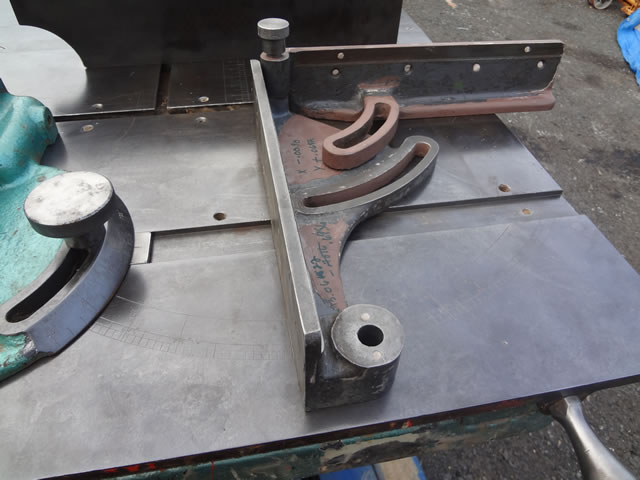
These patterns are still far from perfect, and I’ll undoubtedly make further refinements as I go. I’ll also be going back to look at the patterns for the Tannewitz, Oliver and Northfield quadrants. There’s definitely plenty of room for improvement there.
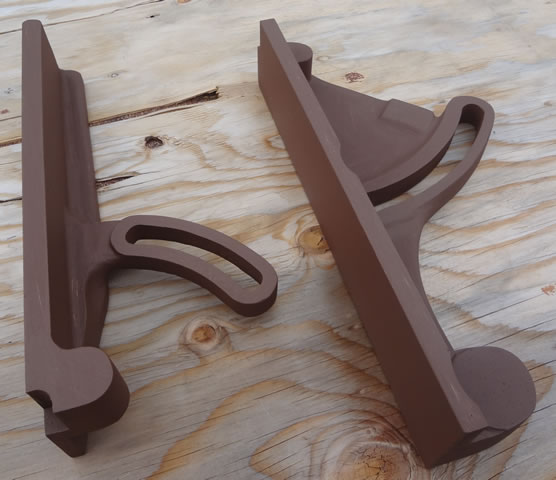
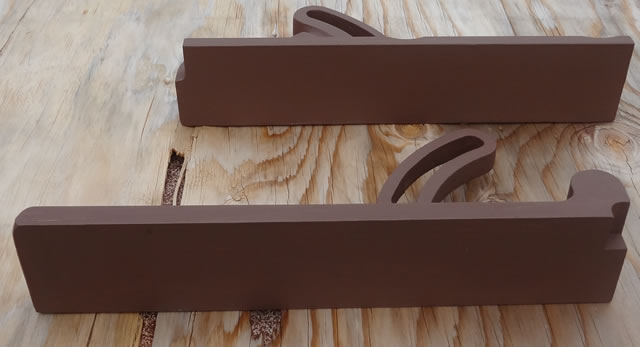

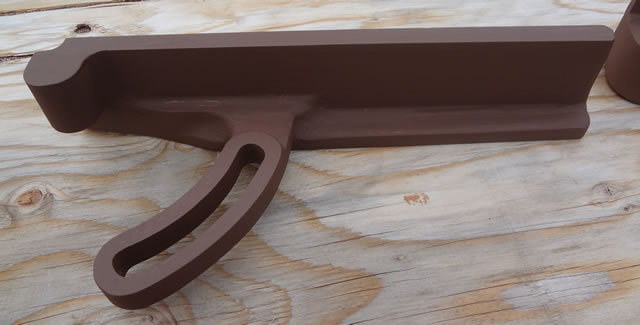
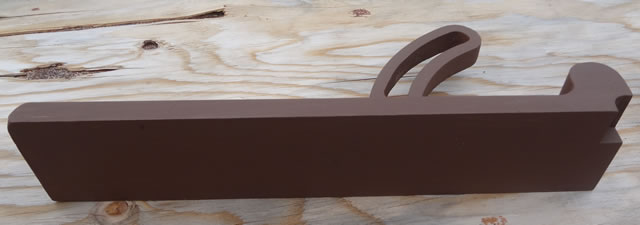
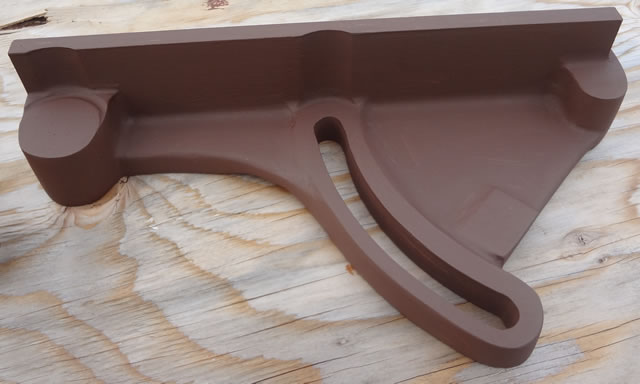
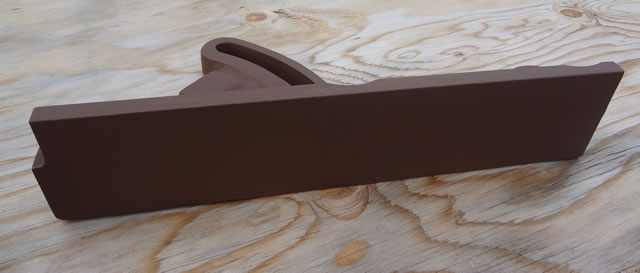
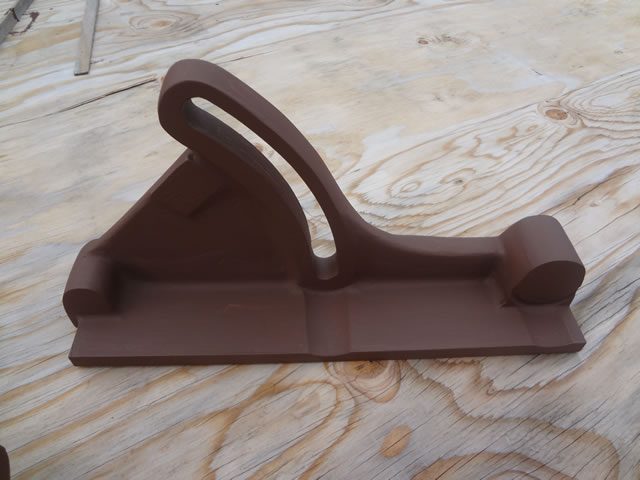
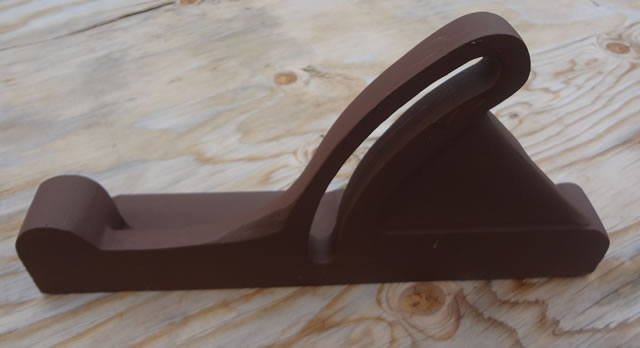

Very nice Arthur,
I’ve never had anything cast myself, but from what reading I have done on the subject, supposedly shrinkage should be taken into account when developing the pattern to achieve the desired end result. Does your refined pattern still have the needed “wiggle room” so the finished product matches the dimensions of the Wadkin oem quadrant…?
Jarrett
Jarrett,
Cast iron shrinkage is about 1/8″ per foot. This pattern is designed so the casting will be approximately 1/8″ oversized in length and 1/8″ oversized in width. The important dimensions are distance between centers on the pin holes and distance from the front edge of the fence to the centers on the pin holes. The other dimensions are not as important. What will be really important is the quality of the castings. As long as the fence face is flat, there will be no problems with the final dimensions.
-Arthur
I figured you would have had that covered. I just couldn’t make out any difference between your pattern and the original quadrants I’ve seen.
Jarrett
Now that’s a compliment.
Thanks,
-Arthur
hello. i am wondering if it possible to purchase a pair of these quadrants? they look great.
Hello Arthur, is it?. I too am searching for a Qudrant, or to cast up a new one for a run down PK. Do you sell these patterns?
George,
I have some of the rough castings. I’m afraid that the freight charges would be prohibitive. These weigh almost 50 LBS for a set. Between the castings and the freight to the AP region, you’d likely be spending more than buying a quadrant locally.
Thanks,
-Arthur
Arthur,
Beautiful work. Let me know if you are willing to ship a set to Detroit. We can discuss offline.
Thanks.
Zayd